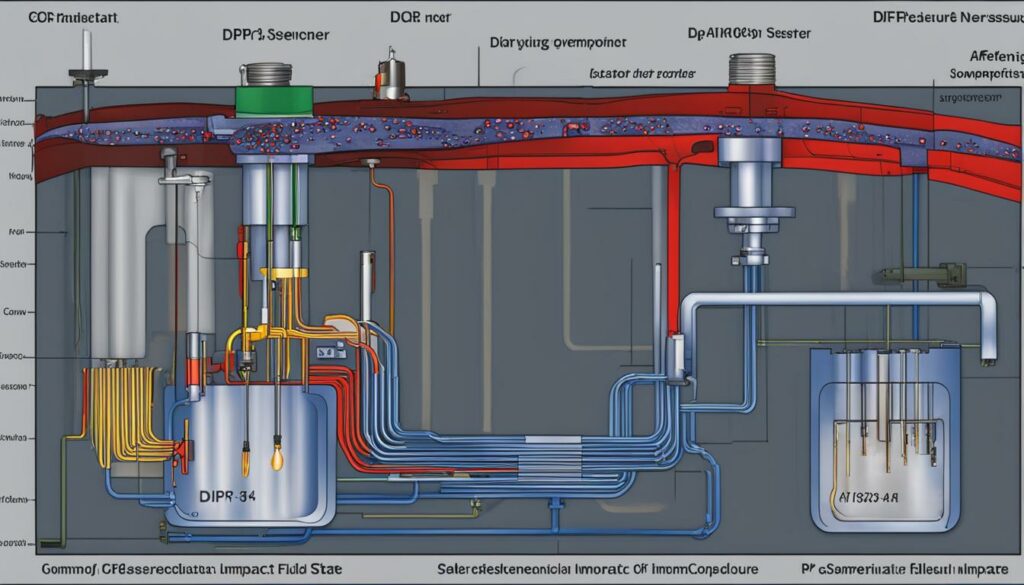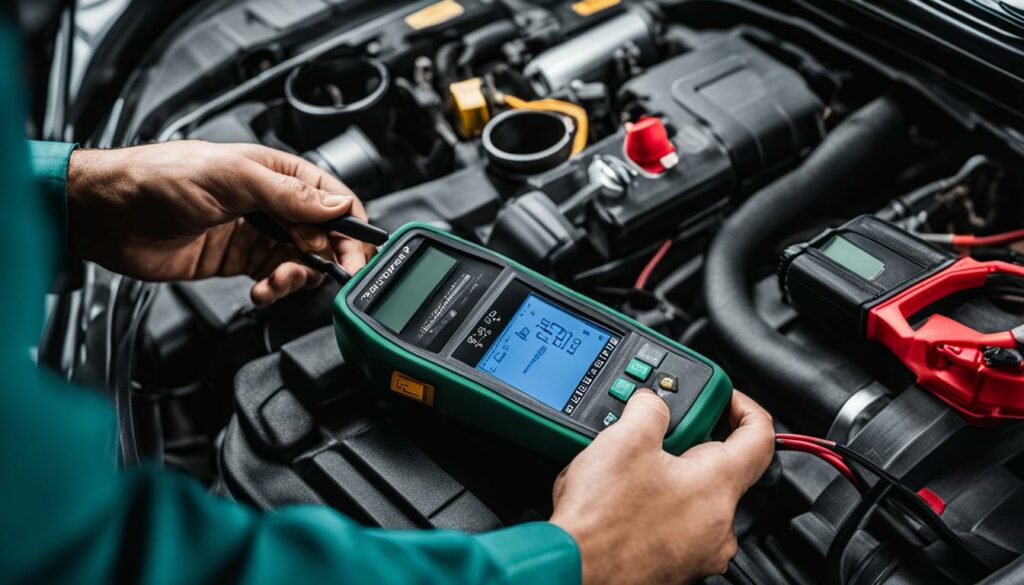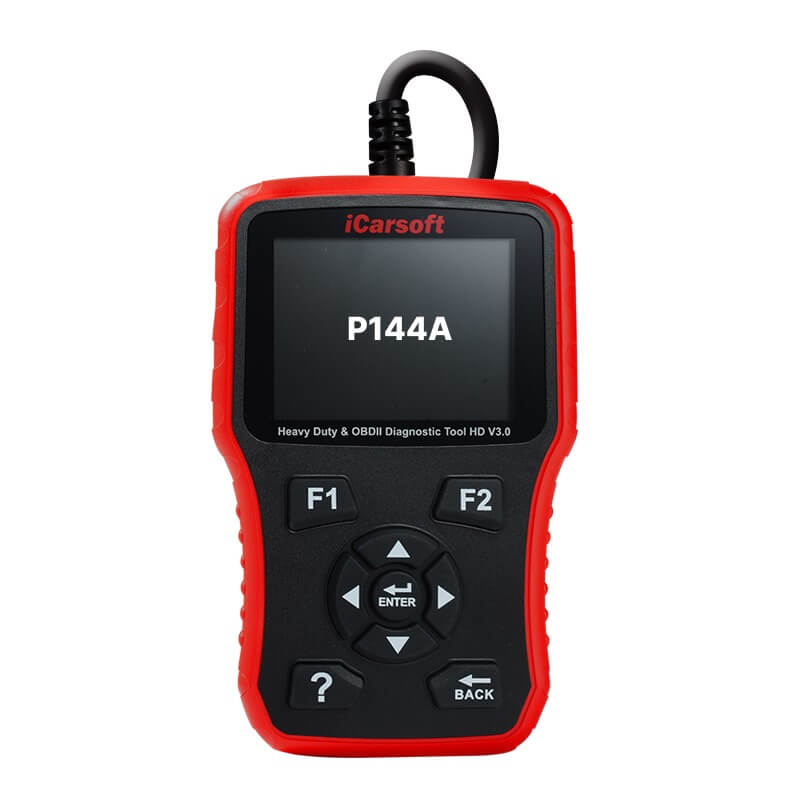P144A – DPF Differential Pressure Sensor Circuit Low
POSTED IN pcodes
The P144A code refers to the DPF (Diesel Particulate Filter) Differential Pressure Sensor Circuit being low. This means that there is a problem with the sensor that measures the pressure difference across the DPF. The DPF is an important component in a diesel engine’s emissions control system, and a malfunctioning DPF sensor can lead to increased emissions and possible engine damage. Troubleshooting the P144A code involves diagnosing the sensor and the circuit to determine the cause of the low differential pressure reading.
Key Takeaways:
- P144A code indicates a low differential pressure sensor circuit in the DPF system.
- A malfunctioning DPF sensor can increase emissions and potentially damage the engine.
- Troubleshooting involves diagnosing both the sensor and the circuit.
- The cause of the low circuit needs to be identified for appropriate repairs.
- Professional assistance may be needed for certain repairs or permanent code removal.
Symptoms of P144A – DPF Differential Pressure Sensor Circuit Low
When the P144A – DPF Differential Pressure Sensor Circuit is low, there are several symptoms that can indicate the presence of this issue. By recognizing these symptoms, you can take timely action to address the problem and prevent further complications.
- Illuminated Check Engine Light (CEL) or Malfunction Indicator Lamp (MIL): One of the most common signs of a P144A code is the activation of the Check Engine Light or Malfunction Indicator Lamp on your vehicle’s dashboard. This serves as an alert that there is a problem with the differential pressure sensor circuit in your DPF system.
- Reduced Engine Performance: Another symptom that you may experience is a noticeable decrease in engine performance. This can manifest as sluggish acceleration, reduced power output, or difficulty reaching and maintaining higher speeds. The low circuit condition of the differential pressure sensor can impact the engine’s ability to function optimally.
- Increased Exhaust Emissions: Since the DPF system plays a crucial role in reducing harmful emissions, a malfunctioning differential pressure sensor circuit can lead to increased exhaust emissions. You may notice thicker smoke or a strong odor coming from the vehicle’s exhaust, indicating the need for attention and repair.
- Possible Regeneration Issues with the DPF: The DPF needs to undergo periodic regeneration, which is the process of burning off trapped soot particles. However, with a low differential pressure sensor circuit, the regeneration process may not occur effectively or at all. This can result in a clogged or inefficiently functioning DPF, further exacerbating emission issues and potentially leading to costly repairs.
It is essential to keep in mind that the specific symptoms may vary depending on the vehicle make and model, as well as the severity of the sensor circuit low condition. If you notice any of these symptoms, it is recommended to consult a qualified technician for a thorough diagnosis and appropriate repairs.

Image: The image illustrates the symptoms associated with a P144A code and the low differential pressure sensor circuit in a DPF system.
Buy tested tuning file for Adblue / EGR / DPF / Adblue off now!
Causes of P144A – DPF Differential Pressure Sensor Circuit Low
When it comes to the P144A code, there are several potential causes that can lead to a low differential pressure sensor circuit in the DPF system. It is crucial to diagnose the specific cause accurately in order to effectively address the issue and resolve the P144A code.
1. Faulty DPF Sensor
One of the possible causes is a faulty DPF sensor. The sensor may be malfunctioning, providing inaccurate readings, or failing altogether. A faulty sensor can result in an incorrect measurement of the pressure difference across the DPF, triggering the P144A code.
2. Wiring or Connector Issue
The P144A code can also be caused by a wiring or connector issue in the sensor circuit. Damaged or loose wiring connections, worn-out connectors, or corrosion can disrupt the proper functioning of the DPF sensor, leading to a low differential pressure reading.
3. Clogged DPF
Another potential cause of the P144A code is a clogged DPF. Over time, the DPF can become filled with soot and debris, obstructing the flow and affecting the pressure readings. A clogged DPF can hinder the accuracy of the differential pressure sensor and trigger the code.
4. Malfunctioning Powertrain Control Module (PCM)
In some cases, the P144A code may be a result of a malfunctioning powertrain control module (PCM). The PCM is responsible for controlling various aspects of the engine, including the DPF system. If the PCM is not functioning correctly, it may send incorrect signals to the DPF sensor, causing the low differential pressure sensor circuit.
By identifying and addressing these potential causes, technicians can effectively diagnose and resolve the P144A code, ensuring the proper functioning of the DPF system.
| Potential Causes of P144A – DPF Differential Pressure Sensor Circuit Low |
|---|
| Faulty DPF Sensor |
| Wiring or Connector Issue |
| Clogged DPF |
| Malfunctioning PCM |
Troubleshooting Steps for P144A – DPF Differential Pressure Sensor Circuit Low
When encountering the P144A code indicating a low differential pressure sensor circuit in the DPF (Diesel Particulate Filter) system, it is crucial to follow these troubleshooting steps to identify and resolve the issue. By performing a systematic diagnostic process, you can effectively pinpoint the cause and take the necessary corrective actions.
1. Inspect DPF Sensor and Circuit:
- Visually examine the DPF sensor, wiring, and connectors for any visible damage, corrosion, or loose connections. Securely reconnect any loose connections and repair or replace any damaged components.
- Ensure that all connections are secure and properly seated.
- Verify the integrity of the sensor circuit.
2. Perform Diagnostic Tests:
- Utilize a scan tool to perform diagnostic tests and retrieve any trouble codes associated with the DPF system. This will provide insight into any additional issues beyond the low differential pressure sensor circuit.
- Monitor the sensor readings to identify any abnormalities or fluctuations that may indicate a malfunction.
3. Further Testing:
- If the cause of the low differential pressure sensor circuit is still undetermined, additional testing may be required.
- Consider testing the DPF itself to ensure there are no obstructions or clogs that could affect the sensor readings.
- Evaluate the Powertrain Control Module (PCM) for any malfunctions or errors that could contribute to the P144A code.
By following these troubleshooting steps, you can effectively diagnose and pinpoint the cause of the P144A code related to the low differential pressure sensor circuit in the DPF system. Taking a methodical approach will enable you to address the issue effectively and proceed with the necessary repairs for optimal vehicle performance.
<!–
| Step | Description |
|---|---|
| 1 | Inspect DPF Sensor and Circuit |
| 2 | Perform Diagnostic Tests |
| 3 | Further Testing |
–><!– –>
–>
Repair Options for P144A – DPF Differential Pressure Sensor Circuit Low
Once the cause of the P144A code has been identified, there are various repair options available to address the issue. The specific remedy will depend on the root cause of the low differential pressure sensor circuit. Here are some possible repair solutions:
Replace Faulty DPF Sensor
If the diagnostic tests indicate that the DPF sensor is faulty, it may need to be replaced. A new sensor can be installed to ensure accurate measurement of the pressure difference across the DPF, allowing for proper emissions control.
Repair Wiring or Connector Issues
In cases where the issue lies with the wiring or connectors in the sensor circuit, repairing or replacing the damaged components may be necessary. This will help restore proper communication and accurate readings from the pressure sensor.
Clean or Replace DPF
If a clogged DPF is determined to be the cause of the low differential pressure, it will need to be cleaned or replaced. Cleaning methods such as thermal regeneration or using specialized cleaning agents can help remove the accumulated soot and restore proper flow through the filter.
Conclusion
In conclusion, the P144A code indicates a low differential pressure sensor circuit in the DPF system. This code should not be ignored, as it can lead to increased emissions and potential engine damage.
By following the troubleshooting steps and identifying the cause of the low circuit, appropriate repairs can be made to resolve the issue and clear the P144A code. It is recommended to start by inspecting the DPF sensor and the wiring and connectors in the sensor circuit for any visible damage or loose connections.
If necessary, professional assistance may be required for thorough diagnosis and repair. This may include replacing a faulty DPF sensor, repairing any wiring or connector issues, cleaning or replacing the DPF if it is clogged, or reprogramming the PCM if necessary. Promptly addressing the P144A code is crucial to ensuring optimal vehicle performance and emissions control.
FAQ
What does the P144A code mean?
The P144A code refers to the DPF (Diesel Particulate Filter) Differential Pressure Sensor Circuit being low. This means that there is a problem with the sensor that measures the pressure difference across the DPF.
What are the symptoms of P144A – DPF Differential Pressure Sensor Circuit Low?
Some common symptoms may include an illuminated Check Engine Light (CEL) or Malfunction Indicator Lamp (MIL), reduced engine performance, increased exhaust emissions, and possible regeneration issues with the DPF.
What are the causes of P144A – DPF Differential Pressure Sensor Circuit Low?
There are several potential causes, including a faulty DPF sensor, a wiring or connector issue in the sensor circuit, a clogged DPF, or a malfunctioning powertrain control module (PCM).
How do I troubleshoot P144A – DPF Differential Pressure Sensor Circuit Low?
Start by inspecting the DPF sensor and the wiring and connectors in the sensor circuit for any visible damage or loose connections. Perform diagnostic tests using a scan tool to check for trouble codes related to the DPF system and to monitor the sensor readings. Further testing of the DPF and PCM may be required.
What are the repair options for P144A – DPF Differential Pressure Sensor Circuit Low?
The appropriate repair will depend on the specific cause of the code. This may involve replacing a faulty DPF sensor, repairing any wiring or connector issues, cleaning or replacing the DPF if it is clogged, or reprogramming the PCM if necessary.


